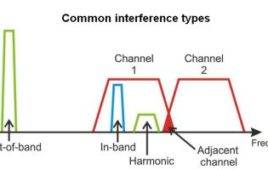It seems 3.85 GHz was a nice starter, but isn’t nearly enough high-frequency 5G spectrum for Verizon’s liking.
The carrier in a recent filing urged the FCC to swiftly move forward with its plan to open up additional high-frequency spectrum for 5G, asking the commission to focus on bands that are near the 28 GHz and 37-40 GHz swaths freed up earlier this summer.
Following its allocation of high-frequency spectrum for 5G in July, the FCC announced a Further Notice of Proposed Rulemaking that would open an additional 17.7 GHZ of spectrum for licensed fixed and mobile use. The additional spectrum included in that notice would come from bands 24.25-24.45 GHz and 24.75-25.25 GHz, 31.8-33.4 GHz, 42-42.5 GHz, 47.2-50.2 GHz, 50.4-52.6 GHz, 71-76 GHz and 81-86 GHz.
Verizon on Friday voiced support for the opening of all of these bands, but noted the FCC should pay “particular attention” to those that frame the bands already opened – that is, the 24 GHz, 32 GHz and 42 GHz bands.
“The Commission should move forward with all of the bands identified for repurposing in the Further Notice,” Verizon wrote. “In particular, it should open up the 24 GHz, 32 GHz, and 42 GHz bands to mobile use under traditional licensing models known to promote investment and innovation. These bands are attractive for prompt deployment of 5G services because their proximity to the 28 GHz and 37-40 GHz bands presents possible opportunities for synergies and economies of scale.”
Verizon also pushed the FCC to open up the remainder of LDMS spectrum adjacent to the already-freed A1 portion of the 28 GHz band, including the A2 and A3 blocks.
But Verizon isn’t looking to share.
Rather than experiment with a “use it or share it” system, Verizon said the FCC should stick to licensing schemes that have been “proven to promote investment and innovation.” Specifically, Verizon said, the FCC should adopt the same licensing approach it instituted for the 28 GHz and 37-40 GHz bands, allowing “exclusive-use licenses with reasonably long terms (10 years or more), renewal expectancies, and relatively large service areas.”
In a separate filing on Friday, the Competitive Carriers Association (CCA) also said the use or share model has not been proved as a reliable sharing method and could deter investment on those bands. T-Mobile also said the commission should authorize flexible use in all of its proposed additional bands.
Verizon further argued in favor of bucking aggregation limits on millimeter wave spectrum, saying “it would be impossible for any firm to exclude a competitor by purchasing ‘too much’ of the spectrum released early on because that competitor will continuously have new opportunities to correct its lack of spectrum by bidding on the additional spectrum coming through the pipeline.”
The last bit is interesting given previous efforts to block Verizon’s deal with XO Communications on the grounds the transaction would give the wireless carrier near-exclusive control of critical 5G spectrum.
Back in May, both Dish Network and INCOMPAS petitioned the FCC to deny Verizon’s proposed acquisition of XO, arguing that the deal – which would give Verizon access to XO’s 28 GHz and 39 GHz spectrum at the end of 2018 – would hinder competition in the 5G marketplace.
The FCC is still conducting its 180-day review of that transaction.
Filed Under: Wireless • 5G and more, Telecommunications (spectrums)




